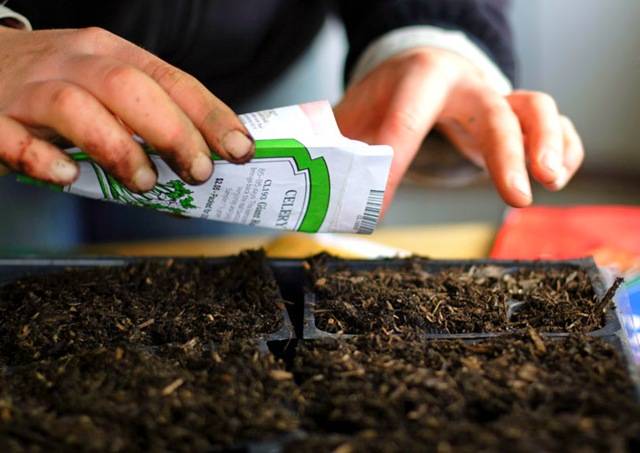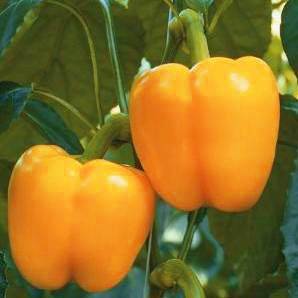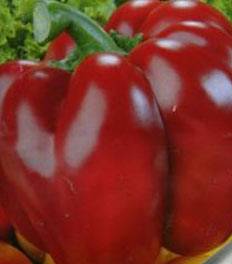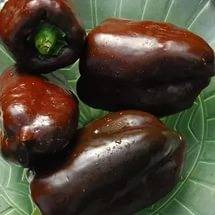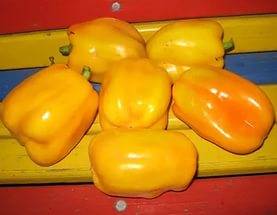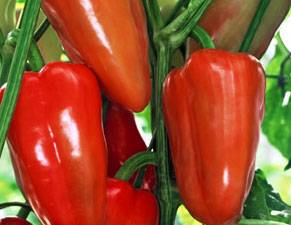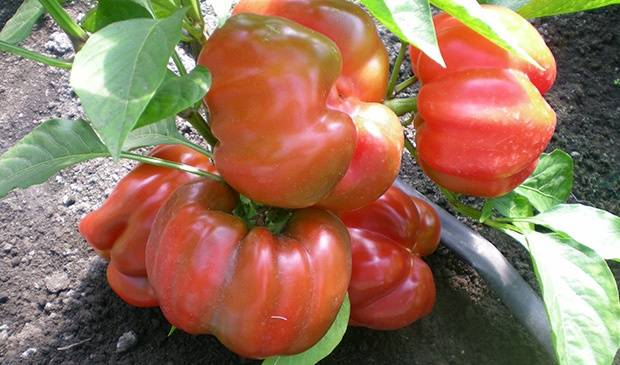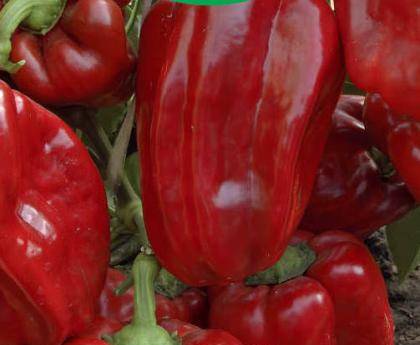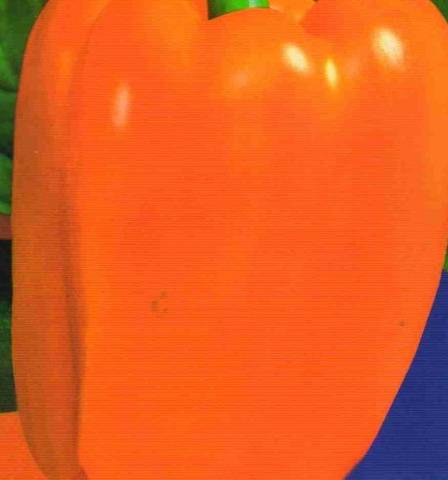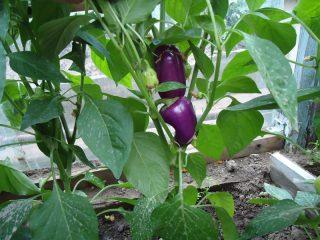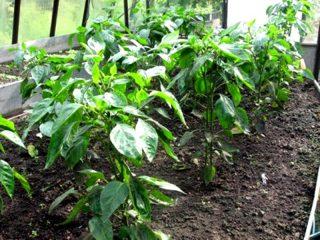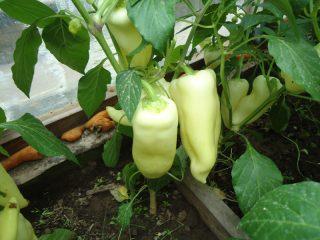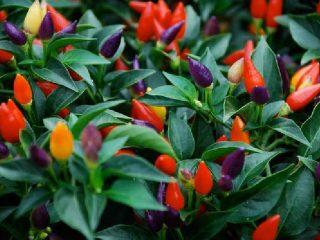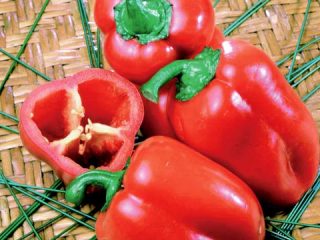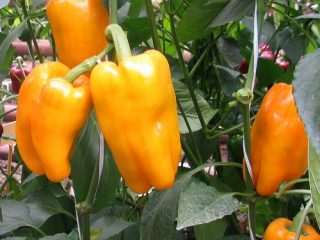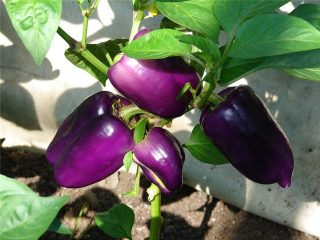Content
Growing bell peppers in the harsh climate of Siberia is difficult. However, if you make every effort, observing certain care conditions, this can be done. In the climatic conditions of Siberia it is much more difficult to obtain good seedlings from seeds. It must be constantly covered with film to protect it from the cold at night or planted in greenhouses. It is best to take pepper seeds early for Siberia. In a short summer they will have time to produce a harvest. When choosing seed material, you need to pay attention to the packaging. Seeds of bell peppers suitable for growing in Siberia will be marked with the appropriate inscription.
Several rules for sowing pepper seeds
In order for pepper seeds to germinate well and produce healthy seedlings, you must follow the basic rules of agricultural technology. Experienced gardeners advise doing the following:
- The last ten days of February is the best time for sowing pepper seeds for Siberia. The choice of such an early date is determined by the long germination of seeds.The first shoots appear on the soil surface around the middle of the fourth week. Plus, to this time it is necessary to add 45 days of growth of the seedlings themselves before planting them in the ground.
- Growing peppers begins with choosing suitable varieties. We'll talk about them further. Seeds must be purchased in specialized stores. It is better if the gardener has his own seed material collected from last year’s harvest. Such grains have a high germination rate, since they have already adapted to local conditions. If you decide to grow hybrids, then you only have to buy such seeds.
- Even the highest quality seeds do not provide 100% germination.. Bad grains are identified in salt water before planting. The consistency of the solution is prepared to approximately 5%, placing the seeds there for about 10 minutes. Good grains, under their own weight, will sink to the bottom of the container with salt water, and dummies will all float to the surface. They will need to be collected and thrown away.
- Salt water is drained along with good seeds through cheesecloth. The grains remaining in the gauze are tied into a bag, washed with clean water, then dipped in a 5% manganese solution for half an hour. The prepared seeds are laid out on a plate covered with a cotton cloth or several layers of gauze, periodically moistening until they hatch. This usually occurs within a week.As soon as the grains have hatched and small embryos have appeared, they are planted in containers. The bottom of the container is covered with expanded clay. It is needed for drainage. It is better to buy prepared soil with nutrients ready-made.Important! Experienced gardeners advise sprinkling the surface of the soil in containers with wood ash. It will protect the seedlings from fungal diseases.
- Seeds are placed in moist soil no deeper than 2 cm.It is optimal to fill the soil with a 5 mm layer of river sand on top. The containers are tightly covered with transparent film and placed in a warm, dark place.
After the sprouts appear, the film is removed from the containers and placed in a lighted place. Seedlings must receive maximum light, otherwise the plants will stretch.
In the video you can see the sowing of seeds:
New Siberian varieties
It's time to choose the best varieties for Siberia. For clarity, we will look at them with photos, but I would like to start with the new products.
Dandy
Breeders bred this variety of peppers in Western Siberia. The culture belongs to the early period of maturation. The low-growing plant grows to a maximum of 50 cm in height. The shape of the fruit resembles a small barrel. At the initial stage of ripening, peppers are white with a greenish tint, and when they reach ripeness they become bright yellow. The pulp is juicy, up to 8 mm thick. A ripe vegetable weighs about 200 g. The crop is considered high-yielding, and its fruits have an excellent presentation.
Moneybags
Another new productive variety bred by Siberian breeders. The plant feels good in open and closed beds. The bush is strong and branched, but not tall. The plant grows to a maximum height of 60 cm. Ripe peppers are large, cone-shaped with a truncated end. One bush can produce up to 15 peppercorns. The rich red fruit with juicy pulp 8 mm thick weighs about 250 g. From 1 m2 you can harvest 5 kg of crop.
Sweet chocolate
An unusual dark brown Siberian vegetable is called chocolate because of its color. However, the flesh of ripe peppers is red inside. The plant grows to a maximum height of 80 cm.In terms of ripening time, the crop belongs to the mid-early varieties. The juicy pulp, 6 mm thick, is very tender and has a specific bitter aroma. Pepper of this variety grows well in open and closed beds.
Golden Taurus
This pepper was bred from a popular hybrid and adapted to the Siberian region. In terms of ripening time, the variety belongs to the mid-early crops. The plant is of medium height with a maximum height of 75 cm. The rich yellow fruits are very large. Some specimens can weigh 0.5 kg. The pulp is very juicy, about 10 mm thick. One bush can produce up to 14 peppercorns.
Separation of the best varieties by ripening time
The best varieties of peppers are determined by the gardener himself. Now there are a huge number of bell pepper hybrids, bred specifically for the Siberian region. However, if a person is new to growing this crop, then until he finds the best varieties for himself, he will need initial help. This is where reviews from experienced gardeners came in handy and helped compile the rating.
Early ripening peppers
So, let's start our review with early ripening peppers:
- Compact bush variety "Kolobok" bears small green fruits. The peppers on the plant stick up.
- Low growing variety "Topolin" is probably the most popular in the Siberian region. Ripe fruits weigh about 150 g.
- Another popular Siberian variety of early pepper "Montero" bears large fruits. The fruits are considered to have a universal purpose.
- Culture variety "One" Ideal for beginner gardeners. The plant takes root and bears fruit even in the worst climatic conditions.
- Yellow pepper varieties "Selvia" have an attractive appearance. The excellent taste of the fruit makes it a favorite of every gardener who has tried to grow it at least once.
You can add many more varieties to this list, for example, “Latino”, “Buratino”, “Dobrynya Nikitich”, etc. It is impossible to list them all.
Mid-early ripening peppers
It's time to smoothly move on to mid-early varieties. These crops also produce good pepper yields in harsh climates:
- Culture variety "Martin" takes root well in open and closed beds. The purpose of the fruit is universal.
- Pepper varieties adapted to any weather conditions "Firstborn of Siberia" distinguished by small fruits. The excellent taste allows the vegetable to be used universally.
- Peppers bear fruit well in open and closed beds "Gift of Moldova". The taste value of the fruit is sweet juicy pulp.
- Middle early culture "Victoria" It is distinguished by its delicate fruit pulp. The plant produces large yields and is immune to diseases. Ripe peppers are ideal for winter harvesting.
- Despite the harsh climate, the variety "Alesha Popovich" bears fruits with thin skin. Oblong peppers are considered universal.
- Thick-walled pepper varieties "Player" very tender and tasty. Ripe fruits become red in color.
Peppers can be added to the listed crops “Vityaz”, “Zorka”, “Aries” and etc.
Productive varieties with very tasty fruits
In this subcategory we decided to include Siberian varieties of peppers with excellent fruit taste. After all, every gardener primarily grows peppers for his own consumption, which means the fruit should be juicy, sweet and fleshy.Let's take a look at the ranking of crops in this category according to reviews from gardeners.
Siberian prince
The culture belongs to the early period of maturation. The first harvest from the moment of seed germination can be obtained after 114 days. The plant is initially intended for cultivation in open ground or under temporary film cover. An adult bush is tall with powerful branches. Peppers have a standard cone-shaped shape and weigh a maximum of 150 g. This vegetable cannot be classified as a fleshy fruit, since the thickness of their walls is only 5 mm, but the excellent taste and aroma of the pulp has made peppers a favorite of many housewives. The small size and shape of the fruit are ideal for stuffing.
At the initial stage of ripening, the vegetable is green with a yellowish tint, and when fully ripe, it turns red. Productivity from 1 m2 is about 4.2 kg. The peppercorns ripen together.
Siberian format
The culture belongs to the hybrids of the middle ripening period and was bred by Siberian breeders. The pepper has a peculiar cube shape with 3 or 4 chambers. Ripe fruits turn from green to deep red. Up to 15 peppercorns can bloom on one bush at the same time. When grown in a greenhouse with good feeding, the fruits grow large, weighing about 450 g. There are individual specimens weighing 0.5 kg. Peppers weighing more than 400 g do not grow in open beds.
When planting seedlings, they focus on placing 5–7 plants per 1 m2. A medium-sized plant grows to a maximum height of 80 cm. About 3.5 kg of crop is harvested from 1 bush.
Siberian Valenok
The culture belongs to the hybrids of the early ripening period. Grows well in open beds and under temporary film cover. The bushes are low-growing, maximum 60 cm in height. The fruit is not very large and weighs only 180 g, but the pulp is very juicy, up to 9 mm thick. Peppers are considered to be of universal use.
The crop consistently bears fruit even with a lack of light and cold weather. Seeds begin to germinate at a temperature of 25OC, however, increase it more than 28OC is not recommended. The first shoots appear after 2 weeks, and after 60 days, the seedlings are planted in the ground. By this time, the plant grows up to 20 cm tall, with a maximum of 10 leaves.
East market
The plant stands out as compact bushes up to 70 cm high. Peppers belong to the middle ripening period. In terms of yield, this variety can also be classified as average, but its rich red fruits are valued for their thick, juicy pulp with excellent taste.
Siberian bonus
Golden-orange fruits can be obtained by growing the crop in open and closed beds. Pepper belongs to the average ripening period with an average yield. The maximum fruit weight is 100 g. Small, meaty peppercorns are ideal for stuffing.
Tusk
The tall plant requires the construction of a support, as it grows up to 1.4 m in height. Peppers ripen early, changing from light green to red. The culture is considered high-yielding. The fruits are small in size, weigh a maximum of 150 g, and have fleshy pulp with excellent taste.
Conclusion
Every gardener can grow Siberian peppers.We have reviewed best for Siberia varieties of peppers, according to experienced vegetable growers. Some people will like them, and maybe someone will find another ideal variety for themselves. The main thing is to strictly follow the agricultural technology of the crop and buy high-quality seeds.
The video shows the best varieties of pepper:
